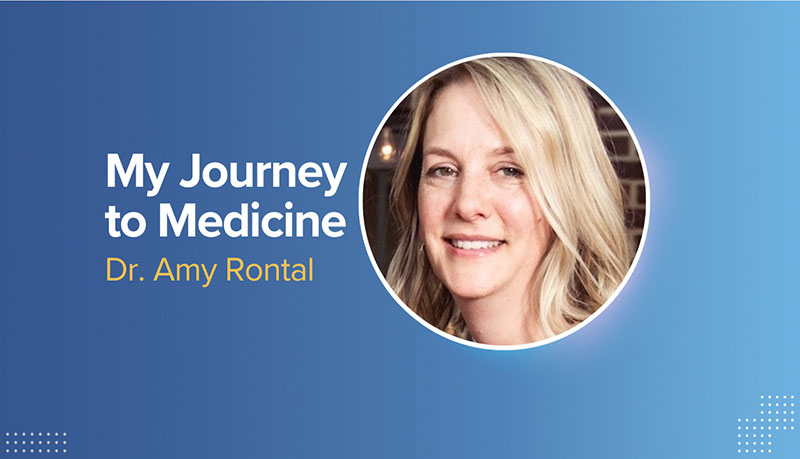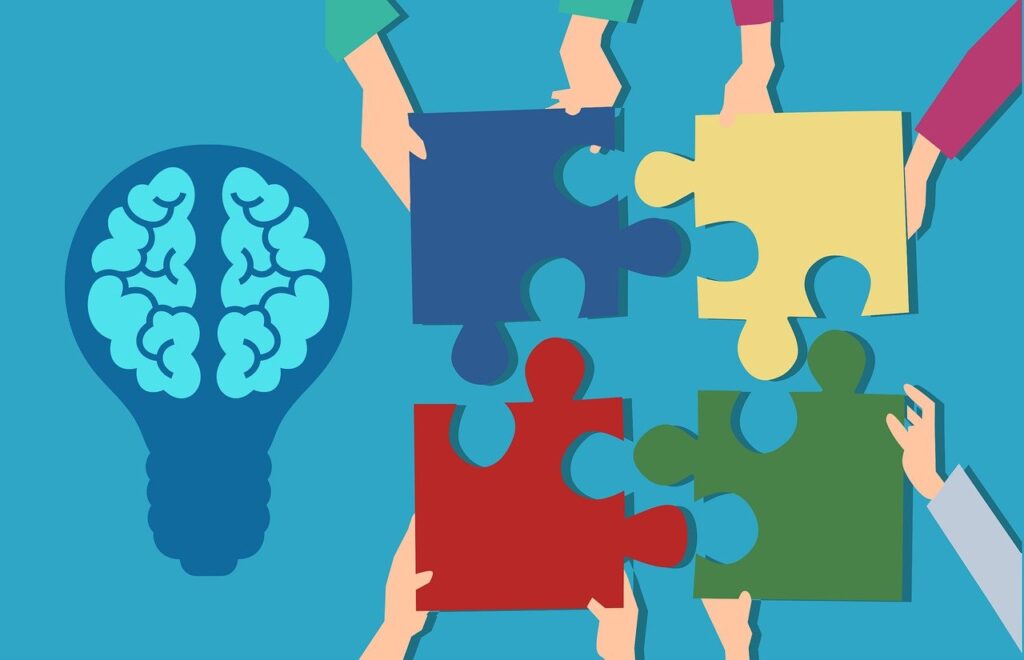
When Blueprint MCAT asked me to write a blog post about my experience becoming a doctor, I felt a twinge of panic. Many of my colleagues had already written amazing essays about challenges they faced, from receiving rejection letters on their first round of medical school applications to struggling with burnout.
As someone whose journey followed a very predictable and straightforward path (back in the 1990s, no less), could I provide any insight to those on the road to becoming physicians now?
While my history studying for the MCAT and applying to medical schools is different from the current process (my MCAT prep consisted of a photocopied question book I borrowed from someone who had taken the MCAT the year prior!), I do have 30 years of experience in the medical field and have learned valuable lessons every step of the way.
1. Never Let Someone Make You Doubt Your Decisions
I was one of those people who always knew they would be a doctor. There was no moment when I thought, “This is it!” because I never considered another career choice.
What I couldn’t tell you back then was what type of doctor I wanted to be. I did not have any doctors in the family to emulate and never had any life-changing interactions that shaped what specialty I wanted to pursue.
However, that all changed in my sophomore year of college. I was 19 years old and landed a job as a scrub tech at the University of Michigan’s Mott Children’s Hospital, despite having no formal medical experience. I trained on the job to pass instruments to surgeons, anticipating what they needed and laying it in their hands, often without them asking.
I was hooked. I loved everything about the OR — the camaraderie between the doctors, nurses, and techs, with everyone working toward a singular goal; the fast pace; actively treating patients; and seeing the effects of those actions in real-time.
Fast-forward to medical school, I continued thinking general surgery was my future. But as I spent more time on surgical rotations, I began to wonder whether being a surgeon would allow me to do everything I wanted.
As much as I always knew I would be a doctor, I also knew I wanted to have children. Can you be a surgeon and a mother? Absolutely. However, I wasn’t sure if my vision of motherhood was compatible with a surgical career.
Nonetheless, I began researching general surgery residencies and working with my mentor, one of the section heads in general surgery at the University of Michigan —and a nationally recognized and intimidating surgeon.
I was in the middle of filling out my applications when I completed my M4 rotation in emergency medicine. Here was a specialty that provided the same fast-paced work and emphasized diagnosis and intervention. It became clear that emergency medicine would provide everything I wanted in a medical career while giving me the flexibility to pursue my non-medical passions.
To say I was nervous about telling my mentor about this decision, especially so late in the game, was an understatement. I set up a meeting and explained my plans to switch specialties. When I finished, he paused and then said, “I understand. People just don’t want to work hard anymore.”
His response was not only embarrassing and maddening, but it made me doubt my decision. Was he right? Was I just avoiding the hard work it would take to become a surgeon?
The more I thought about it and considered my previous journey, the more I knew I was making the right decision — not out of laziness, as my mentor had insinuated, but out of consideration for what I wanted. Now, having practiced emergency medicine for decades, I can confidently say I made the right choice.
2. Master the Art of Medicine
While the origin of the phrase “the art of medicine” may be debated, it is clear that there are two distinct components to practicing medicine: the rigorous science-based study of anatomy, pathophysiology, and treatment of disease and the deeply human and compassionate aspects of caring for patients.
There is considerable focus on the former, as there should be, but the best physicians master the latter as well.
The art of medicine encompasses the skills of effective and inclusive communication, empathy, and the ability to tailor medical care to each patient’s individual needs and circumstances.
It also includes a comforting and reassuring bedside manner, achievable through verbal and non-verbal communication: introducing yourself to the patient and acknowledging any family members who may be present, sitting down when taking a patient’s history, and taking time at the end of the interaction to address their questions.
It is also crucial to hone your bedside diagnostic skills, allowing you to discern nuances in a patient’s history, symptoms, and physical examination that traditional diagnostic tests may miss.
As an attending physician, I once had an upper-level resident present a patient to me with flank pain. After providing the history, they listed renal colic at the top of their differential diagnosis and proposed a plan of laboratory tests and a CT scan of the abdomen. What they had failed to do was fully examine the patient who, on my evaluation, revealed a vesicular rash consistent with herpes zoster as the cause of their pain. It was an embarrassing mistake for that resident, for sure, but one that reinforced the need to seek out the clues patients provide if only we look for them.
These skills require study and practice—both of which you’ll get to experience in medical school—and they are crucial in building trust and establishing rapport between physician and patient. They complement the science part of medicine, resulting in more effective and empathetic care.
3. Commit to Lifelong Learning
After four years of undergrad, four years of medical school, three to eight years of post-graduate training, and more quizzes and exams than you care to remember, it’s easy to think you are “done” once you graduate residency and pass your certification exam.
How will you stay current on the medical literature and ever-changing standards of care? Read your specialty’s core journals. Attend conferences. Discuss diagnostic strategies and treatment options with your colleagues. Study with question banks (yes, you need question banks even after MCAT prep) and listen to podcasts.
The options are endless! The important thing is to commit to staying a student of medicine for life.
Becoming a physician is a long, tough process, but you will be rewarded with a career that is intellectually stimulating and provides the chance to make a measurable difference in people’s lives every day you practice. It is a privilege unlike any other to care for patients in their time of need.
I wish you the best of luck on your journey!
Amy Rontal, MD, earned her BS and MD at the University of Michigan and completed her emergency medicine training at MCP/Hahnemann University in Philadelphia. She is the Director of Medical Content for Rosh Review/Blueprint Prep and is an assistant professor in Emergency Medicine at Oakland University William Beaumont Hospital School of Medicine, where she continues to work clinical shifts on a part-time basis.
Everyone’s journey to becoming a doctor looks different, but they all start with the MCAT and applying to medical school. Blueprint MCAT can help you at every stage of your journey with free MCAT resources, MCAT courses, and medical school admissions consulting.
Search the Blog

Free Consultation
Interested in our Online MCAT Course, One-on-One MCAT Tutoring or Med admissions packages? Set up a free consultation with one of our experienced Senior Student Advisors.
Schedule NowPopular Posts
-
MCAT Blog What's on the MCAT?
-
MCAT Blog How to Review MCAT Full Lengths

Free MCAT Practice Account
Need great MCAT practice?Get the most representative MCAT practice possible when you sign up for our free MCAT Account, which includes a half-length diagnostic exam and one of our full-length MCAT practice exams.
Learn More







